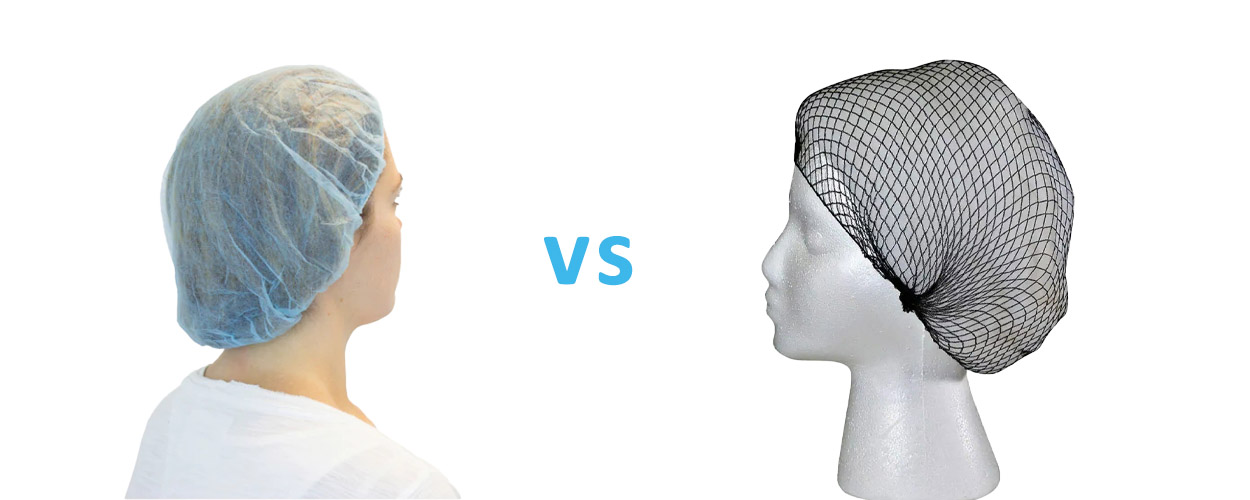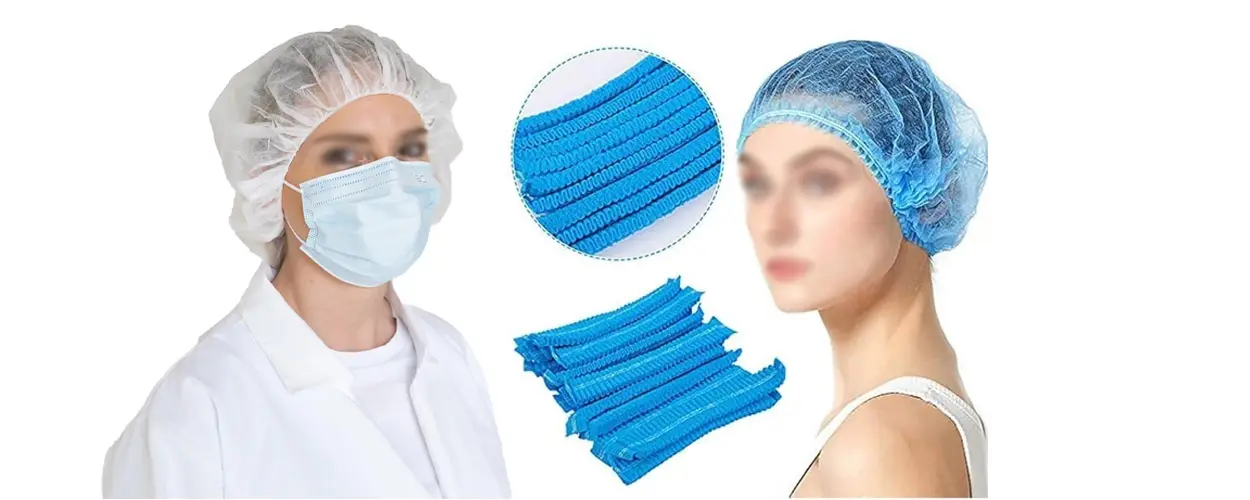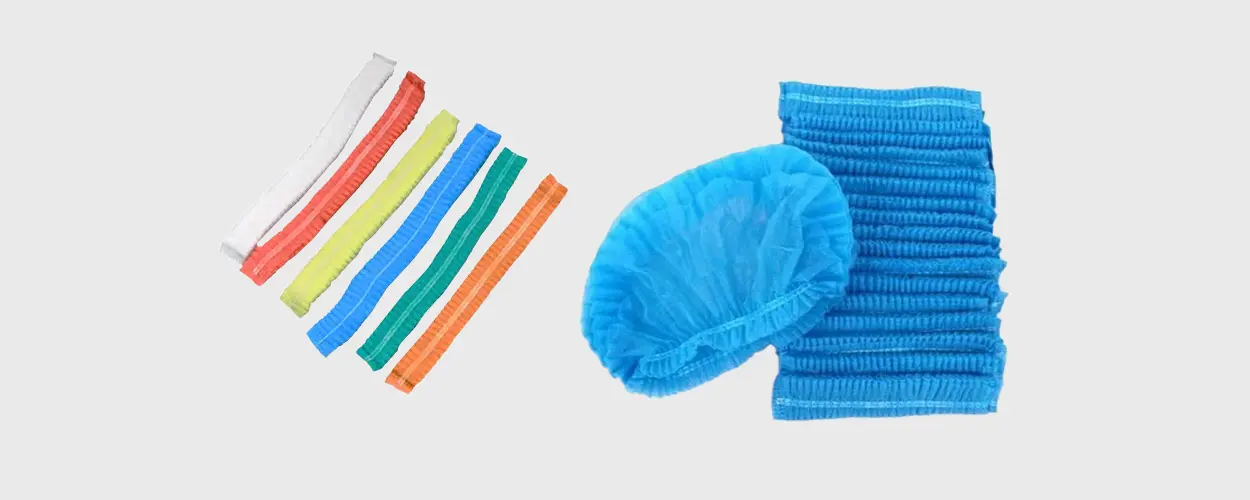Il cappuccio bouffant è un must per i luoghi in cui la pulizia conta di più: i ospitali, laboratorio di cibo, fabbriche. Il suo design a copertura completa mantiene fuori i contaminanti. Abbattiamo le sue caratteristiche chiave, Come scegliere quello giusto, e dove viene usato, tutto in Q&UN!
Q1: Cos'è un berretto da bouffant?
Sbuffo is a disposable protective head cover made of PP and non-woven fabric materials. It can completely cover the hair and wrap around the ears. Its main applications include:
Prevent dandruff or hair from falling into a sterile environment and serve as a barrier to maintain a sterile environment. Such as operating rooms, laboratories and dust-free workshops.
A volte, it is also used to protect the wearer’s head from external oil stains. Such as food processing and pastry shops.
Q2: Perché indossare un berretto da bouffant?
- Curb contaminants: Prevent fallen hair and dandruff from entering sterile areas or food processing zones.
- Regulatory compliance: Mandatory requirements in medical environments (such as operating rooms), produzione alimentare (FDA/Standard HACCP), and the pharmaceutical industry.
- Comprehensive protection: Work in coordination with masks and protective suits to minimize the risk of cross-contamination.
Q3. Bouffant Cap vs. Hairnet: Qual è la differenza?

| Caratteristica | Sbuffo | Hairnet |
|---|---|---|
| Copertura | Testa piena, compresi i lati, Indietro, e orecchie | Copre principalmente la parte superiore e posteriore della testa |
| Controllo delle particelle | Alti: trappole i capelli, forfora, e particelle di pelle | Basso - peli e scaglie sciolti possono scappare |
| Comfort | Fit sciolto, traspirante, Nessuna pressione del cuoio capelluto | Fit più stretto, può essere pruriginoso o causare “ammaccature” |
| Opzioni materiali | Pp, sms, antistatico, biodegradabile | Principalmente mesh di nylon o poliestere |
| Monouso | SÌ (monouso) | SÌ (ma spesso riutilizzato in contesti non medici) |
| Livello di conformità | Adatto alla FDA, GMP, OSHA, e standard per camere pulite | Accettabile in preparazione alimentare a basso rischio o casual |
| Miglior caso d'uso | Chirurgia, farmaceutici, elettronica, fabbriche di cibo | Caffè, Bakeries, Gestione del cibo di base |
| Dimensioni disponibili | Multiplo (Petite a XL) | Per lo più unica |
| Codice a colori disponibile | SÌ (blu, bianco, rosa, verde, ecc.) | Raramente - di solito beige o marrone |
| Aspetto | Professionale e pulito | Informale o dall'aspetto di base |
| Valutazione delle stelle consigliate | ★★★★★ (per ambienti idioti-critici) | ★★ ☆☆☆ (Per impostazioni di uso leggero) |
Suggerimento riassunto:
Se il tuo ambiente richiede un'igiene rigorosa, I tappi di bouffant sono lo standard del settore. Le capelli sono ideali solo per spazi leggeri o non regolati.
Q4. Come faccio a scegliere la dimensione giusta?
La maggior parte dei cappucci da bouffant sono un passo unico più con fasce elastiche che si adattano a teste da 21″ a 25″. Ma ecco i tuoi consigli di dimensionamento:
Petite (21″-23″) - Meglio per adattamenti aderenti o sotto i caschi
XL (26″+) - Per capelli o panini spessi
Codice a colori - blu (standard), Bianco (Visibilità della camera pulita), Rosa (Unità di maternità)

Q5. Di cosa sono fatti i cappelli da bouffant?
- Polipropilene (Pp) : The most common type, traspirante, and free of fuzz.
- sms: A layer of non-woven fabric is added to the middle layer, providing better protection and greater durability, making it suitable for surgical use.
- Eco-friendly: caps made of biodegradable plant fibers that can decompose within 6 A 12 mesi
Q6. Quanto costano i cappelli bouffant?
Il prezzo dei tappi di bouffant varia a seconda della qualità e della quantità del materiale. Ecco una panoramica dei prezzi tipici (I prezzi sono prezzi al dettaglio degli utenti finali):
| Tipo | Prezzo (per 100 Caps) |
| BASS PP BASS | $4 - $8 |
| Premium (antistatico, anti-dogge) | $12 - $20 |
| Opzioni ecologiche | $15 - $30 |
Se stai cercando produttori affidabili per cappellini bouffant, sentiti libero di contattaci. Siamo un esportatore di forniture dentali professionista con 14 anni di esperienza, Offrire i prezzi più competitivi sul mercato.
Q7. Posso riutilizzare i cappellini bouffant?
Absolutely forbidden:
❌ Medical field: The single-use principle must be strictly followed. Reuse is strictly prohibited.
❌ After getting wet with sweat: The humidity will weaken the adsorption property of the meltblown fabric, and its protective ability will decline, making it unusable again
Limited reusability:
✅ non-strictly hygienic environments (such as beauty studios)
Q8. The Hidden Benefits of Bouffant Caps
It is better than a hair tightening net to prevent hair from being too tight and causing discomfort
It is convenient to use tools such as stethoscopes
Q9. Common mistakes to avoid when wearing a bouffant cap
- Wearing it in reverse, the elastic seam should be at the back of your neck
- The hair is not fully covered, like the temples are exposed
- Use standard caps in anti-static sensitive environments (please use anti-static fluffy caps)
Per la punta: Check in front of a mirror before entering the sterile area
Q10. Quanto tempo possono essere indossati i tappi di bouffant?
Consigliato indossare tempo:
| Ambiente | Tempo di usura consigliato massimo | Riferimento |
| Sale chirurgiche (Alta temperatura) | 2 ore | Linee guida Aorn 2023 |
| Cibo a freddo (≤4 ° C.) | 4 ore | NSF/ANSI 49 |
| Workshop elettronico (Bassa umidità) | 8 ore | Associazione ESD |
Q11. Is it Safe for People with Allergies to Wear Bouffant Caps?
La maggior parte dei cappucci da bouffant sono realizzati con materiali non-colati. Tuttavia, if you are sensitive to polypropylene or other synthetic fabrics, be sure to check the product specifications before use to understand the material details.


